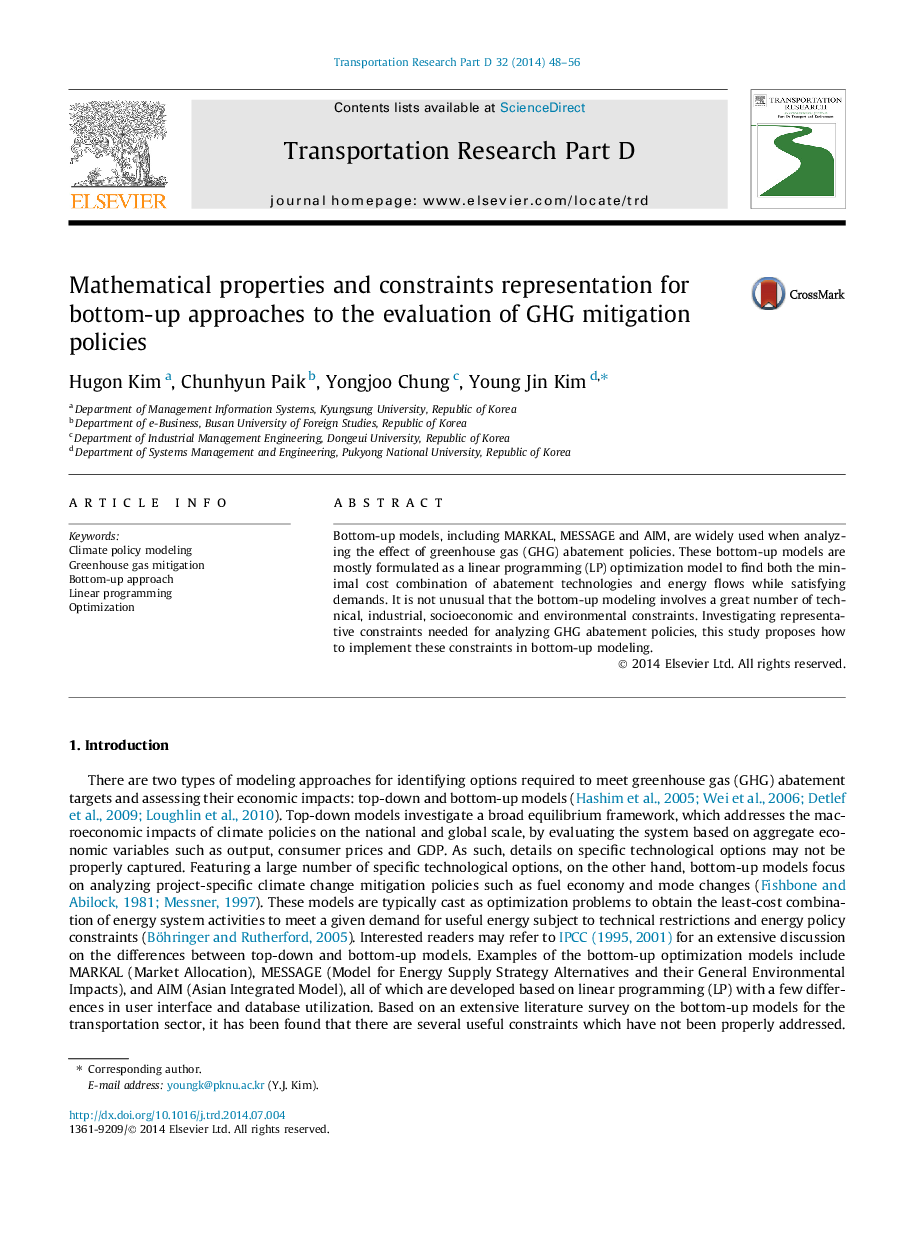| Article ID | Journal | Published Year | Pages | File Type |
|---|---|---|---|---|
| 7500836 | Transportation Research Part D: Transport and Environment | 2014 | 9 Pages |
Abstract
Bottom-up models, including MARKAL, MESSAGE and AIM, are widely used when analyzing the effect of greenhouse gas (GHG) abatement policies. These bottom-up models are mostly formulated as a linear programming (LP) optimization model to find both the minimal cost combination of abatement technologies and energy flows while satisfying demands. It is not unusual that the bottom-up modeling involves a great number of technical, industrial, socioeconomic and environmental constraints. Investigating representative constraints needed for analyzing GHG abatement policies, this study proposes how to implement these constraints in bottom-up modeling.
Related Topics
Life Sciences
Environmental Science
Environmental Science (General)
Authors
Hugon Kim, Chunhyun Paik, Yongjoo Chung, Young Jin Kim,
